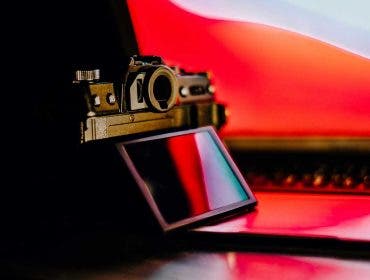MIDI is a powerful tool for musicians that helps them create elaborate, multi-layered compositions with ease in any genre. The term stands for “musical instrument digital interface,” and it’s the standard that devices like keyboards, synthesizers, and computers use to communicate. While there are specific cables, the technology can work over USB, lightning, and other connections. When fully connected, it lets the user control multiple devices digitally, even from different manufacturers, to create everything from symphonies to intimate singer/songwriter ballads through virtual instruments.
MIDI isn’t actually audio
Despite letting you create audio, MIDI isn’t an audio signal. It’s information only, which is why you can also refer to it as MIDI data. For example, MIDI lets a controller, like a keyboard, tell a synthesiser to play B flat. The synthesizer creates that note, but only because it was told to by the signal sent by the keyboard. And instead of a keyboard, the signal could come from a computer, a separate controller, and so on. There are endless possibilities.
The equipment you’ll need
MIDI setups vary depending on what type of music you’re creating. Your setup could be as simple as your personal computer and keyboard. You could also have a computer, digital piano, synth, and drum machine. Or, you could skip the computer altogether and connect everything to a sequencer.
With MIDI, all your components will speak the same language. With the right software or even just an inexpensive controller, you can control them all.

What’s a MIDI controller?
A MIDI controller is a device that can send a signal to something that creates sound. In its simplest form, it’s just a button. More likely, it’s a variety of buttons, dials, and sliders. Many have a small keyboard, but there are versions with 88 full-size keys for those more familiar with pianos. You can find controllers from brands including Arturia, ICON Digital, Korg, and M-Audio.
Older gear (and some current devices), like what you’d see in music production photos from the early 1980s, uses specific MIDI cables. These bulky five-pin connectors look similar to XLR microphone cables, but with a larger number of smaller pins. Most modern gear connects through a USB cable. If your device only has MIDI connections, you’ll need an interface to connect them to a computer.
Synthesizers and drum machines are the other common MIDI devices. These create a wide variety of sounds, and most are highly customizable. From creating the sounds of an orchestra to looping dance beats, they make music controlled by you or your software, which is often referred to as a digital audio workstation, or DAW. Some of the top DAW brands include Ableton, ProTools, and FL Studio.
MIDI equipment to consider
There are countless options for MIDI gear, and what you’ll need depends on the type of music you want to create. Here are some good basics to start.
1. Arturia MiniLab Mk II Portable USB-MIDI Controller
The Arturia MiniLab Mk II Portable USB-MIDI Controller is a compact 25-key controller with 16 knobs and eight pads to help you dial in the sound you want, including pitch bends. Octave transpose buttons let you access your desired range while keeping the overall size of the controller portable. Touch-sensitive pitch and modulation strips allow for creative flourishes. This instrument can send either MIDI note info or continuous controller (“CC”) data. It connects via USB 2.0 and comes with its own software.
2. Korg NanoKONTROL2 Slim-Line USB MIDI Controller
The Korg NanoKONTROL2 Slim-Line USB MIDI Controller is a tiny keyboardless MIDI controller with a knob, fader, and three switches for each of its eight different channels. You can set these to control volume and pans, or specific features found on your synthesizer or drum machine. It’s efficient enough that it doesn’t need an external power supply, drawing all it needs from the USB connection itself. It also comes with several pieces of software, including EzDrummer Lite, so you can configure virtual drum kits for your latest music production.
3. PreSonus ATOM Production and Performance Pad Controller
The PreSonus ATOM Production and Performance Pad Controller is a portable controller with 16 pressure and velocity-sensitive pads that are backlit by red, green, and blue LEDs. Its 20 additional smaller buttons, along with four dials, are all programmable. It connects via USB and is easily integrated with top software like Ableton Live and Studio One, which makes it a great companion for your next live performance.
Shop the full line-up of keyboard MIDI controllers at Adorama.






